-
DHS, DoE, U.S. Army test operational effectiveness of technology solutions
Understanding the true potential of a new technology comes with the opportunity to deploy it in a real life, urban environment scenario against adaptive adversaries. Recently, the Department of Homeland Security (DHS) Science and Technology Directorate (S&T) collaborated with the U.S. Army to assess the operational effectiveness of twenty-five technologies through practical application.
-
-
In emergencies, don’t trust a robot too much
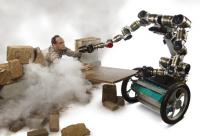
In emergencies, people may trust robots too much for their own safety, a new study suggests. In a mock building fire, test subjects followed instructions from an “Emergency Guide Robot” even after the machine had proven itself unreliable — and after some participants were told that robot had broken down.
-
-
Science-based data collection key to better wildland fire defense
In February 2011, three fires raged through suburban areas outside of Amarillo, Texas, at the wildland urban interface (WUI), the area where residential communities and undeveloped wildlands meet. A new report by the National Institute of Standards and Technology (NIST) describes how researchers analyzed a major 2011 Texas wildland fire using a rigorous and scientifically based post-fire data collection approach, a system they believe will lead to improved defensive measures and strategies for significantly reducing structural damage and property loss.
-
-
Paramedics' risk of being assaulted far exceeds risk to firefighting colleagues
Research found that y medical technicians and paramedics are fourteen times more likely to be violently injured on the job than the firefighters they work alongside. The researchers found that assault-related injuries are often not reported, not acknowledged by administration, and therefore they are internalized by the workers as a “part of the job.”
-
-
Paramedics' risk of being assaulted far exceeds risk to firefighting colleagues

Research found that y medical technicians and paramedics are fourteen times more likely to be violently injured on the job than the firefighters they work alongside. The researchers found that assault-related injuries are often not reported, not acknowledged by administration, and therefore they are internalized by the workers as a “part of the job.”
-
-
Northwestern enhancing local safety with new volunteer emergency response training
Northwestern University says it is enhancing its commitment to the safety of its students, faculty, staff, and visitors by launching a new training session of its Community Emergency Response Team (CERT) program for volunteers this April. The CERT program is a volunteer opportunity and training program for community members to help support preparedness activities, community welfare during major special events and organized community recovery efforts following a crisis.
-
-
Mining social media improves disaster response efforts
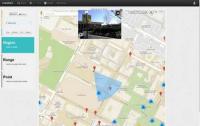
Leveraging publicly available social media posts could help disaster response agencies quickly identify impacted areas in need of assistance, according to a team of researchers. By analyzing the September 2013 Colorado floods, researchers showed that a combination of remote sensing, Twitter and Flickr data could be used to identify flooded areas.
-
-
A firefighter drone flies, crawls up walls
The 1974 American disaster film “Towering Inferno” depicted well the earnest struggles of firefighters engaged in ending a fire at a 138-story skyscraper. To this day, fires at high-rise buildings are considered one of the most dangerous disasters. Researchers developed a wall-climbing scout drone to fight fires in high-rises, finding the source of the fires and locating people trapped inside.
-
-
Precisely pinpointing first responder locations
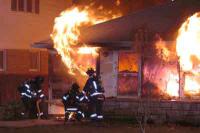
When firefighters rush into a burning building, it is essential that they and their operations team know their precise locations at all times. Even with global positioning systems (GPS) and other tracking technologies, environmental conditions, obstructions and interference from the building materials can severely limit pinpointing them. In the event of an injury, search teams rely on communications systems to rescue these first responders. DHS S&T is developing a new system to help tackle this challenge.
-
-
Remote-controlled robot inspects suitcase bombs
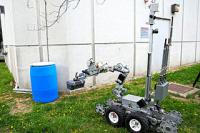
Abandoned items of luggage are frequently found at airports and train stations. This is a case for the emergency services, which have to assume that these items might contain bombs. They must assess the potential threat quickly, avert any possible danger, and preserve evidence for criminal proceedings. In the future, police will have the support of a remote-controlled sensor system as they go about their duties. Researchers are developing this sensor suite in cooperation with industry partners and criminal investigation authorities.
-
-
Snake robot range-sensing control system improves search-and-rescue performance
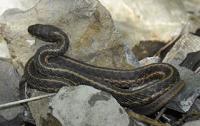
Rescue operations at disaster scenes often use robots to avoid further human danger. Modelling robots on snakes can provide better access through narrow paths in rubble, but previous models which control snake robots by the head do not adequately avoid collisions between the body of the robot and surrounding obstacles. Researchers say that to be more effective in search and rescue missions, robotic snakes should comprise a series of sections joined by links which either pitch up and down or yaw through sideways turning angles.
-
-
Locust-inspired robot traverses rocky terrain, assists in search and rescue

Since the 1980s, advanced robotic platforms have provided assistance to crisis intervention teams in the wake of man-made and natural disasters. The objective of such robots, in various sizes and shapes, has been to intervene where humans cannot and send life-saving data to rescue teams in the field. A new, locust-inspired robot, can jump eleven feet high — more than twice the height of similar-sized robots — and cover a horizontal distance of 4.5 feet in one leap. The researchers believe the robot will perform well in search-and-rescue missions and in reconnaissance operations in rough terrain.
-
-
U.S., Israel to co-develop technologies for first responders
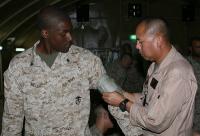
Some $12 million will be funneled to collaborative Israeli-American projects for the development of advanced technologies for first responders over the next three years. The agreement brings together the Israeli Ministry of Public Security and the U.S. Department of Homeland Security in a drive to better equip and prepare both countries’ national rescue forces including fire, police, and first-aid units. Each side will invest equally in the project.
-
-
One third of U.K.'s specialized terrorist response vehicles to be scrapped
In 2004, to meet the threat of terrorists using chemical, biological, or nuclear weapons in an attack in the United Kingdom, the government introduced the Incident Response Units (IRUs), with their distinctive red coloring with yellow stripes, at a cost of £54 million. To save money, one third of all the fire brigade vehicles which were part of the IRUs, and which would have been called out in the event of terrorists setting off a “dirty bomb,” are being scrapped.
-
-
Improving active shooter response
When an active shooter strikes, every second counts. The sooner law enforcement can respond and the more information they have, the more lives can be saved. Battelle’s SiteGuard Active Shooter Response (ASR) provides a high tech, integrated approach to help protect building occupants in an active shooter event. The ASRcombines gunshot sensors with building security and communication systems to provide critical information to law enforcement and building occupants. As soon as the sensors detect a gunshot, SiteGuard ASR activates a series of predetermined actions and automated responses vital to occupant and first responder safety and optimized response.
-
- All
- Regional
- Water
- Biometrics
- Borders/Immig
- Business
- Cybersecurity
- Detection
- Disasters
- Government
- Infrastructure
- International
- Public health
- Public Safety
- Communication interoperabillity
- Emergency services
- Emergency medical services
- Fire
- First response
- IEDs
- Law Enforcement
- Law Enforcement Technology
- Military technology
- Nonlethal weapons
- Nuclear weapons
- Personal protection equipment
- Police
- Notification /alert systems
- Situational awareness
- Weapons systems
- Sci-Tech
- Sector Reports
- Surveillance
- Transportation
Advertising & Marketing: advertise@newswirepubs.com
Editorial: editor@newswirepubs.com
General: info@newswirepubs.com
2010-2011 © News Wire Publications, LLC News Wire Publications, LLC
220 Old Country Road | Suite 200 | Mineola | New York | 11501
Permissions and Policies
Editorial: editor@newswirepubs.com
General: info@newswirepubs.com
2010-2011 © News Wire Publications, LLC News Wire Publications, LLC
220 Old Country Road | Suite 200 | Mineola | New York | 11501
Permissions and Policies
